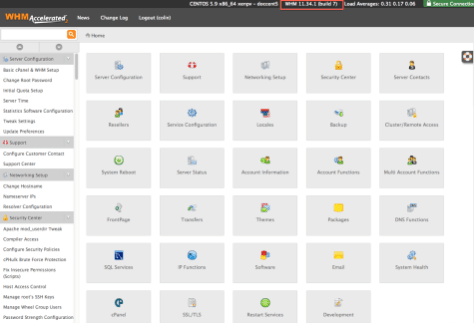Every HTTP error has an HTTP code that describes the status of a URL to the client. These three-digit codes include error messages that visitors encounter.
Following are the five classes of HTTP codes divided into categories, by the first digit:
- Errors starting with 1, 2, or 3 are fully functional requests
- Errors starting with 4 are client-side error, the most common error codes span 400 to 404
- Errors starting with 5 are server-side error, the most common error codes span 500 to 510
4xx Errors
These errors show up where there is a problem with the client’s request (web browser etc), but often point to a problem on a website.
For instance: You have a broken link on your website, the client requests it and receives a 404 error page. That is how it works.
To resolve this you can check for broken links on your website. On WordPress this can be either done by a plugin or you can check error pages from cPanel -> Home -> Advanced -> Error Pages.
400 Bad Request
It happens when the user’s request contains an incorrect syntax.
401 Unauthorized
The error shows up when the requested file is a protected one and requires authentication, such as a username and password.
403 Forbidden
In general, this happens when the index file is missing on your server or the root directory is empty, or when you have purchased a new hosting and have not uploaded your website or have not installed WordPress, etc.
Other times, it happens when the server stops the visitor to access the requested file. To resolve this, check for the file’s permission settings. Also see whether the system protects the file in cPanel’s Indexes interface (cPanel -> Home -> Advanced -> Indexes).
404 Not Found
When the server doesn’t find the requested URL. Commonly occurs when a visitor mistypes a URL or you have interlinked to a dead URL.
Managed WordPress users may use a permalink finder plugin to reduce this error to zero.
5xx Errors
Such errors occur when a server fails to full fill an apparently-valid request made by the client. These errors are a little bit complicated because sometimes a chain of servers handles an HTTP request which means that the error may also come from other server.
In WordPress, you can resolve it by testing your themes and plugins as it generally comes from there.
Comment below for any assistance in this regard.
500 Internal Server Error
The error is a result of misconfiguration, especially when the server finds some unexpected condition and fails to gather any information about the real problem it is facing.
501 Not Implemented
Comes when the server does not support the client’s chosen HTTP method. Also, occurs on out-of-date servers. To resolve, try reloading your page, clear the browser cache. Other issues might include viruses or malware or an overload on your server.
502 Bad Gateway
Occurs when proxy servers are badly configured or IP communication between backend systems is poor or when the client’s Internet Service Provider (ISP) is overloaded. May also occur due to imroperly configured firewall functions.
Clearing the client’s (web browser) cache sometimes work in resolving this issue. Other times, you may need to report the issue to an expert. You may also comment here for help.
Try to start a new browser session, restart your system and network, change DNS and clear your cache.
503 Service Unavailable
When a server fails to handle requests due to a temporary overload or when the server is temporarily under maintenance. Generally happens when you update your website’s software. To resolve, simply wait.
504 Gateway Timeout
Comes when a server did not receive a timely response. Can happen temporarily or when your server starts to go out of resources or due to slow communication between upstream servers. To resolve, look for any server connectivity issues, check the requested page code, test your firewall for any faults.
505 HTTP Version Not Supported
When the server refuses to allow the HTTP protocol that the client system specifies. This error generally occurs when the user’s system incorrectly specifies the protocol. To resolve, switch to a modern web browser.
506 Variant Also Negotiates
Means the server is not properly configured. To resolve this issue, contact an expert or research yourself or comment below.
507 Insufficient Storage
Simply means that the server is out of free memory. The error comes when requested application fails to allocate necessary server resources. To resolve this issue, contact an expert or research yourself or comment below.
509 Bandwidth Limit Exceeded
This means that your server has reached its bandwidth limit, and you need more resources. To resolve, wait every time until the limit resets or try reducing your resource usage or upgrade your hosting plan or move to a dedicated server.
510 Not Extended
Shows up when the webserver does not support the extension attached to the HTTP request. To resolve, wait every time until the limit resets, or reduce your resource usage, or upgrade your hosting plan, or move to a dedicated server.


















